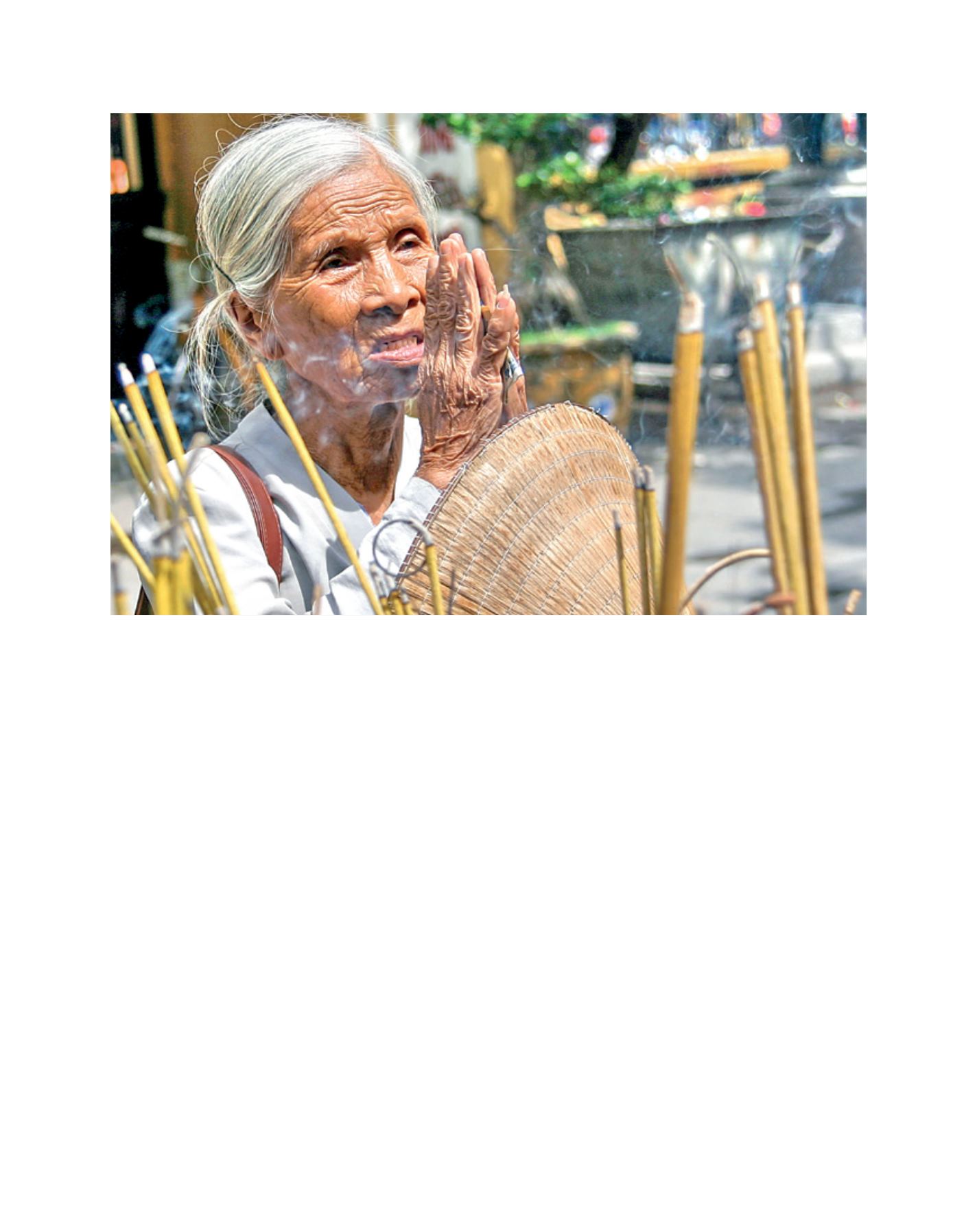

[
] 131
For instance, the Tay and Thai are very good at wet rice
cultivation and successful in the development of their socio-
economic models for cultivation in the valleys and at the feet
of mountains. They have created the famous rice granary in
the very northern part of Viet Nam. They have formed their
own culture – known as the wet rice culture – with their
traditional festivals related to the harvest, new rice welcome
events, the rice god and a system of belief in natural spirits.
The Mon-Khmer group live in the high mountainous area
and cultivate the swidden land. Their culture is related to
the highland and forest regions, with colourful patterns on
their costumes and lively dances with the sonority of song
and music. Particularly, the Khmer people in the south live
in the large delta and practice Theravada Buddhism. Among
the Austronesian peoples, the Cham in the central part of
Viet Nam are used to living along the coastal areas and their
culture is imbued with the sea. They still have their own
ancient writing system and contribute to the cultural diver-
sity of Viet Nam with the famous My Son holy site, Poh
Nagar Tower and their own special festivals dedicated to
their gods and ancient kings with songs, dances and rituals.
The Hmong-Dao group have been able to cultivate the
wet rice on the mountainsides and are very good at forging
iron tools, husbandry and herb medicine. Thus, the habita-
tion of the ethnic groups creates their living environment
and cultural traits depending on their locations: the delta
zone, the coastal zone, the midland zone, the valley and
mountainous zone, the high mountainous zone or the plain
zone. The cultural zones reflect the shared cultural identi-
ties and at the same time the cultural diversity that once
again creates multicultural Viet Nam.
The cultures of ethnic groups in Viet Nam are always in
exchange and share similarities. They bear common traits
of the culture in Southeast Asia, but they are influenced
by each other and depending on the natural environment,
habitation and historical conditions. Some cultural traits
can be found among many ethnic groups in certain areas
and become the regional cultural trait. Thus, in Viet Nam,
cultural regions have been created, each with its own
customs, traditional festivals, songs and rituals such as the
Lang region, Thanh region or Dong region.
Cultural diversity can also be seen in various parts of Viet
Nam among an ethnic group. This is due to cultural adap-
tation to the living environment and conditions, as well as
cultural exchange among neighbouring ethnic groups. For
instance, for the Kinh people, its culture in the northern,
central and southern parts has distinguishing traits. A number
of the Kinh immigrants who moved from the north to the
south and settled there for thousands of years have been in
cultural exchange with the indigenous peoples there such as
the Cham or the Khmer and adapted to their living conditions.
These living conditions and symbiosis make the Kinh culture
in the south different from the one in the north, especially in
dialects, customs, traditional costumes and folk performances.
Image: Nguyen Huynh
Making a petition to spirits for good luck, good health and prosperity
A
gree
to
D
iffer

















